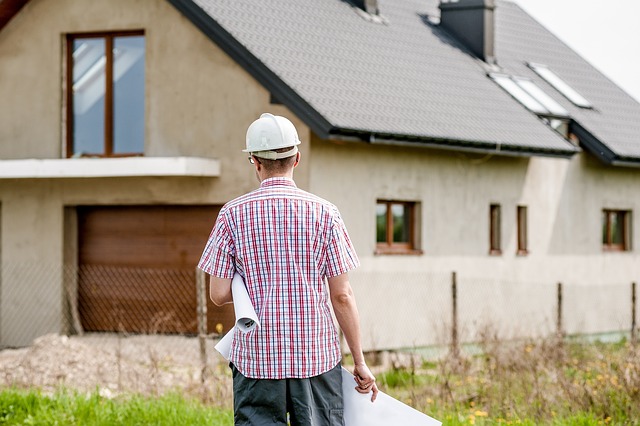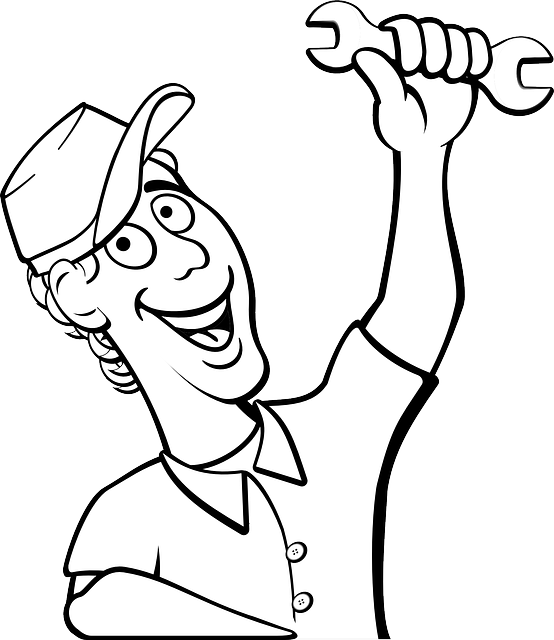Regular home assessments are essential for maintaining the structural integrity, safety, and efficiency of your residence within the scope of Home Repair And Maintenance. These assessments provide a comprehensive evaluation of all significant elements, including the roof, foundation, plumbing, electrical systems, heating and cooling systems, to ensure they function optimally. Proactive maintenance based on these evaluations can prevent costly future repairs, mitigate health risks like mold growth, and improve energy efficiency by identifying issues early and addressing them promptly. For homeowners, this means not only preserving their home's value but also ensuring a continued safe and comfortable living environment. It's important to prioritize roof condition, structural stability, plumbing integrity, electrical safety, and insulation effectiveness during these assessments. By systematically addressing maintenance needs based on the age and condition of your home's components, you can effectively manage repair priorities and plan for long-term preservation. Regular Home Repair And Maintenance is a strategic investment in the longevity and well-being of your property and its occupants.
Homeowners looking to safeguard their investment and ensure a safe living environment may benefit from conducting comprehensive home assessments regularly. This article delves into the critical aspects of home repair and maintenance, emphasizing the importance of thorough evaluations. We will explore the key areas that require attention during these assessments, the invaluable role of professional home inspectors, and a DIY checklist for upkeep. Additionally, we’ll discuss strategic approaches to prioritize repairs, all aimed at optimizing your home’s longevity and functionality. Understanding home repair and maintenance is key to preserving the integrity of your dwelling, and this guide is designed to equip you with the knowledge needed to maintain it effectively.
- Understanding the Necessity of Comprehensive Home Assessments for Longevity and Safety
- Key Areas to Inspect During a Home Repair and Maintenance Evaluation
- The Role of Professional Home Inspectors in Identifying Repair Needs
- DIY Checklist for Regular Home Maintenance and Inspection
- Prioritizing Repairs: A Strategic Approach to Home Upkeep and Renovation Planning
Understanding the Necessity of Comprehensive Home Assessments for Longevity and Safety

Regular comprehensive home assessments are indispensable for safeguarding the longevity and safety of a residence. These evaluations provide an in-depth understanding of a property’s current condition, enabling homeowners to anticipate and address repair needs proactively. Home Repair And Maintenance is not merely about fixing leaky faucets or painting walls; it encompasses a systematic approach to identifying potential issues that could compromise the structural integrity or environmental health of a home. By conducting thorough inspections, homeowners can uncover hidden problems such as water damage, electrical hazards, or inefficient insulation before they escalate into costly repairs or pose significant risks to residents.
The process of a comprehensive home assessment typically involves a detailed examination of the property’s structure, systems, and components. This includes evaluating the roof, foundation, plumbing, electrical systems, heating and cooling units, and more. The goal is to ensure that all elements are functioning optimally and to pinpoint any areas that require immediate attention or upgrades. For instance, identifying a failing roof early can prevent water intrusion that could lead to mold growth and compromised structural supports. Similarly, updating insulation can enhance energy efficiency and comfort. In essence, these assessments are pivotal in maintaining the value of the home while preserving the well-being of those who live there. Regular upkeep, informed by these comprehensive evaluations, is a key component of Home Repair And Maintenance best practices, ensuring that a home remains a safe and comfortable space for years to come.
Key Areas to Inspect During a Home Repair and Maintenance Evaluation

When conducting a thorough home repair and maintenance evaluation, it’s imperative to focus on several key areas that can significantly impact the structural integrity and longevity of your residence. The roof, for instance, is a critical component that shields your home from the elements. During the evaluation, inspect the roof for signs of aging, such as cracked shingles, missing granules from asphalt shingles, or leaks. Ensure that gutters and downspouts are securely attached, free of debris, and properly channeling water away from the foundation to prevent erosion and water damage.
Moving indoors, the home repair and maintenance evaluation should scrutinize the plumbing and electrical systems, as these are integral to the functionality and safety of your home. Check for leaks or corroded pipes that could lead to water damage or compromised water quality. Examine electrical outlets and fixtures for proper functioning, and verify that the wiring is up to code, particularly in older homes where deterioration can occur over time. Additionally, assess the insulation in attics, basements, and crawl spaces to ensure energy efficiency, which contributes to a more comfortable living environment and can reduce utility costs. Regular maintenance and timely repairs address issues before they escalate, thereby safeguarding your home’s condition and your family’s well-being.
The Role of Professional Home Inspectors in Identifying Repair Needs

When it comes to maintaining the integrity and functionality of a home, professional home inspectors play an indispensable role in pinpointing repair needs. These experts conduct thorough assessments, leveraging their trained eyes to detect issues that may be hidden from view or overlooked by untrained individuals. Their comprehensive approach encompasses everything from structural soundness to the efficiency of electrical and plumbing systems. By identifying potential problems early on, homeowners can avoid costly repairs down the line. The insights provided by professional inspectors are invaluable for creating a maintenance plan tailored to the specific needs of a property. This proactive stance not only ensures the longevity of the home but also safeguards the well-being and comfort of its occupants. Moreover, these assessments are critical for homeowners looking to sell their property, as they provide transparency and build trust with potential buyers by offering a clear picture of the home’s condition. In essence, engaging a professional home inspector is a prudent step in the ongoing home repair and maintenance process, one that can save time, resources, and prevent unforeseen complications associated with deferred maintenance.
DIY Checklist for Regular Home Maintenance and Inspection

Regular home maintenance is a critical aspect of home repair and maintenance, ensuring the longevity and safety of your living space. A DIY checklist serves as an indispensable tool for homeowners to regularly inspect their property. This checklist typically includes seasonal tasks such as cleaning gutters, inspecting the roof for leaks or damage, and checking HVAC systems to ensure they are operating efficiently. Additionally, it’s important to examine plumbing fixtures for signs of wear or corrosion, test smoke and carbon monoxide detectors, and verify that safety features like electrical outlets and fire extinguishers are in good working order. Proactive homeowners who diligently follow a DIY checklist can prevent minor issues from escalating into costly repairs, thereby maintaining the integrity of their home’s structure and systems. Regular upkeep also contributes to a safer living environment by addressing potential hazards before they become significant problems. Engaging in these practices as part of your home repair and maintenance routine is not only beneficial for the longevity of your property but also for the well-being of its inhabitants.
Prioritizing Repairs: A Strategic Approach to Home Upkeep and Renovation Planning

Regular home assessments are indispensable for maintaining a safe and comfortable living environment. A strategic approach to prioritizing repairs within home upkeep and renovation planning hinges on a comprehensive evaluation of the property’s condition. Homeowners should conduct systematic inspections, noting areas that require immediate attention, such as structural integrity, electrical systems, plumbing, and HVAC functionality. These assessments enable property owners to identify issues before they escalate into costly repairs. By categorizing repairs based on urgency and potential impact on home value, homeowners can allocate their resources effectively. This prioritization process considers factors like the age of components, frequency of use, and local climate considerations, ensuring that the most critical home repair and maintenance tasks are addressed promptly. A well-planned schedule for home repairs not only extends the lifespan of the property but also enhances its safety and aesthetic appeal, ultimately contributing to a more stable and secure living situation. Homeowners who implement a systematic approach to home assessments can make informed decisions about which repair tasks should take precedence, thereby optimizing their renovation planning and preserving the longevity and integrity of their homes.
Homeowners play a pivotal role in maintaining their residences’ integrity and functionality. Regular home assessments, a cornerstone of effective home repair and maintenance, are indispensable for safeguarding longevity and safety. By leveraging the expertise of professional home inspectors, homeowners can pinpoint repair needs with precision. The DIY checklist provided serves as a valuable guide for routine inspections, enabling proactive management of property upkeep. Strategic prioritization of repairs, informed by comprehensive evaluations, is crucial for long-term planning and budgeting within the realm of home maintenance. Embracing these practices ensures a residence remains a secure and comfortable sanctuary for years to come.